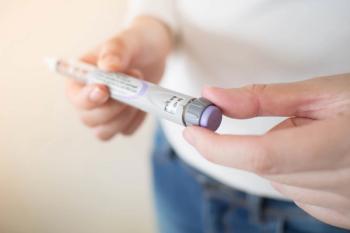
CGM Optimization Program in Resource-Limited Setting Can Help Patients with Diabetes Improve Glycemic Control
HbA1c levels decreased significantly after an average of 154 days in patients who used a continuous glucose monitor.
A continuous glucose monitoring (CGM) optimization program can help patients with diabetes become more self-aware and give health care providers additional insight into glycemic control, according to new research presented at the Endocrine Society’s 2024 annual meeting, held June 1 to 4 in Boston, Massachusetts.1
According to data from the CDC, nearly 40 million people in the United States have a diagnosed case of diabetes.2 Complication from the disease can include microvascular, macrovascular, and neuropathic issues, which is why managing the condition is crucial to improving outcomes. CGM is a key tool in managing diabetes, as it provides a comprehensive and detailed overview of blood glucose levels.3
READ MORE:
Although previous research has proven the efficacy of CGM in managing diabetes, there is a lack of data on the real-world application of CGM adoption in a resource-limited setting. In order to assess the impact of a multifaceted approach on improving CGM utilization, investigators from Wyckoff Heights Medical Center in New York and Joslin Diabetes Center in Boston conducted a quality improvement initiative study.
For the study, researchers developed a CGM clinical care optimization program and established a diabetes technology team. The team met weekly during the study period and created a CGM workflow, expanded medical assistant responsibilities related to diabetes technology and training, created 5 bilingual patient handouts, built CGM vendor relationships, and developed a CGM manual for data download, billing and coding, and education to increase CGM knowledge.
The study period occurred from February to November 2023 and data was collected before the initiation of CGM and at the most recent patient visit.
After 9 months of the optimization program, 333 patients had CGM prescriptions. Of those, 56% were female, 44% were male, 71% were Latino, 25% were Black or African American, 4% were White, 2% were Asian, and 2% were American Indian or Alaska Native. Additionally, 81% had Medicaid or Medicare and 19% had commercial insurance. Over half of the patients spoke English, while 38% spoke Spanish. The majority of patients had type 2 diabetes.
Investigators found that, of 116 patients who were evaluated for the impact of CGM, HbA1c decreased significantly after an average of 154 days. In patients with a baseline A1c of 9% or more, levels decreased from 10.5% to 8.8%.
“Creating a CGM optimization program in a resource-limited setting is critical in improving patient self-awareness and provider insight in glycemic control in patients diagnosed with type 1 and type 2 diabetes,” the authors concluded. “These data demonstrate the feasibility of implementing a CGM optimization program in a resource-limited setting, which is critically important in improving clinical care for people with diabetes.”
Pharmacy practice is always changing. Stay ahead of the curve: Sign up for our
References
1. Sterbenz A, Fuentes Rosales J, Abraham S, et al. Effects Of A Continuous Glucose Monitoring (CGM) Optimization Program On Prescribing Behavior And Glycemic Outcomes. Presented at: ENDO 2024; June 1-4, 2024; Boston, MA.
2. National Diabetes Statistics Report. Report. CDC. May 15, 2024. Accessed June 6, 2024. https://www.cdc.gov/diabetes/php/data-research/index.html
3. Manov AE, Chauhan S, Dhillon G, et al. The Effectiveness of Continuous Glucose Monitoring Devices in Managing Uncontrolled Diabetes Mellitus: A Retrospective Study. Cureus. 2023 Jul 27;15(7):e42545. doi: 10.7759/cureus.42545. PMID: 37637581; PMCID: PMC10460137.
Newsletter
Pharmacy practice is always changing. Stay ahead of the curve with the Drug Topics newsletter and get the latest drug information, industry trends, and patient care tips.























































































































